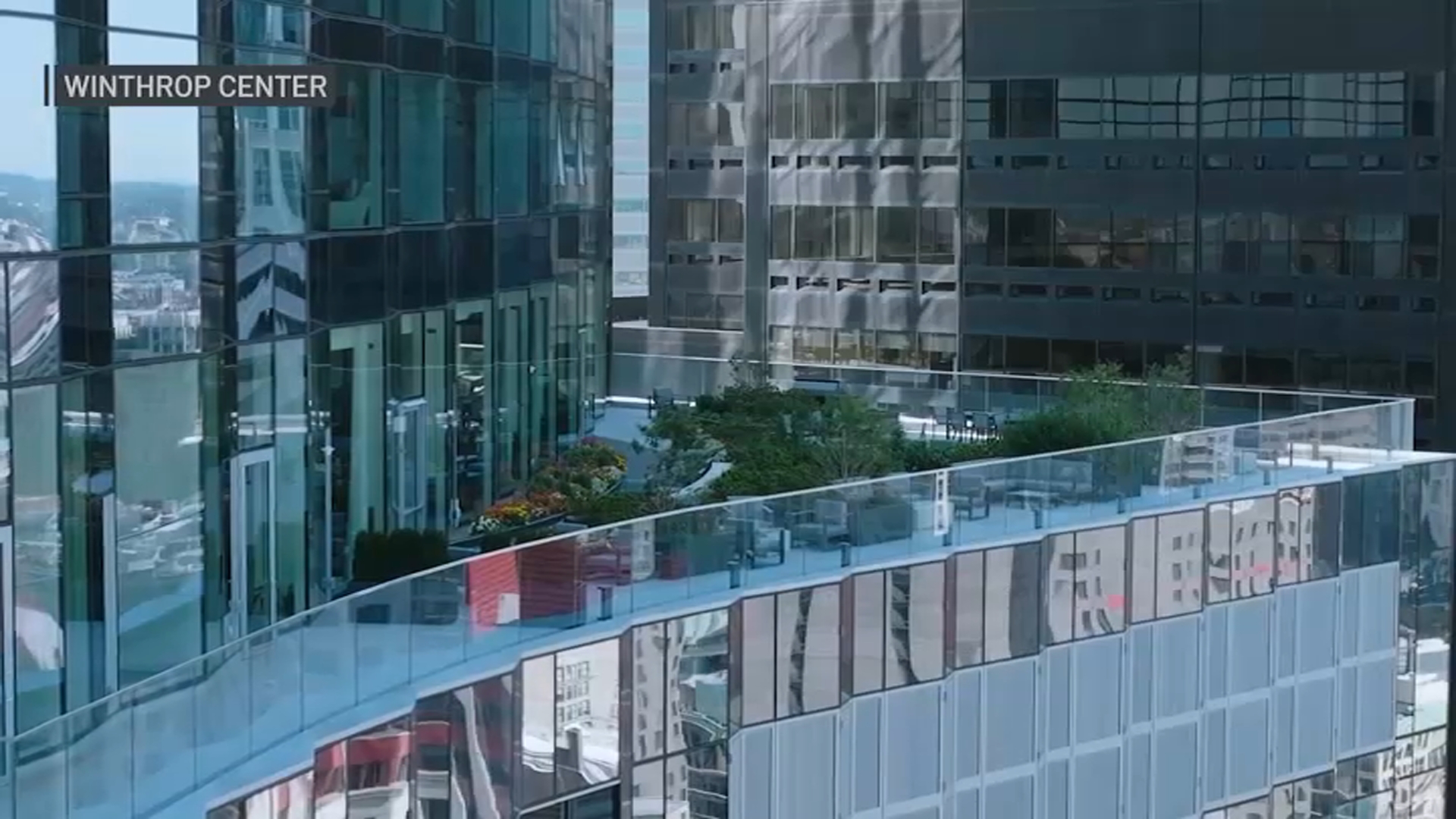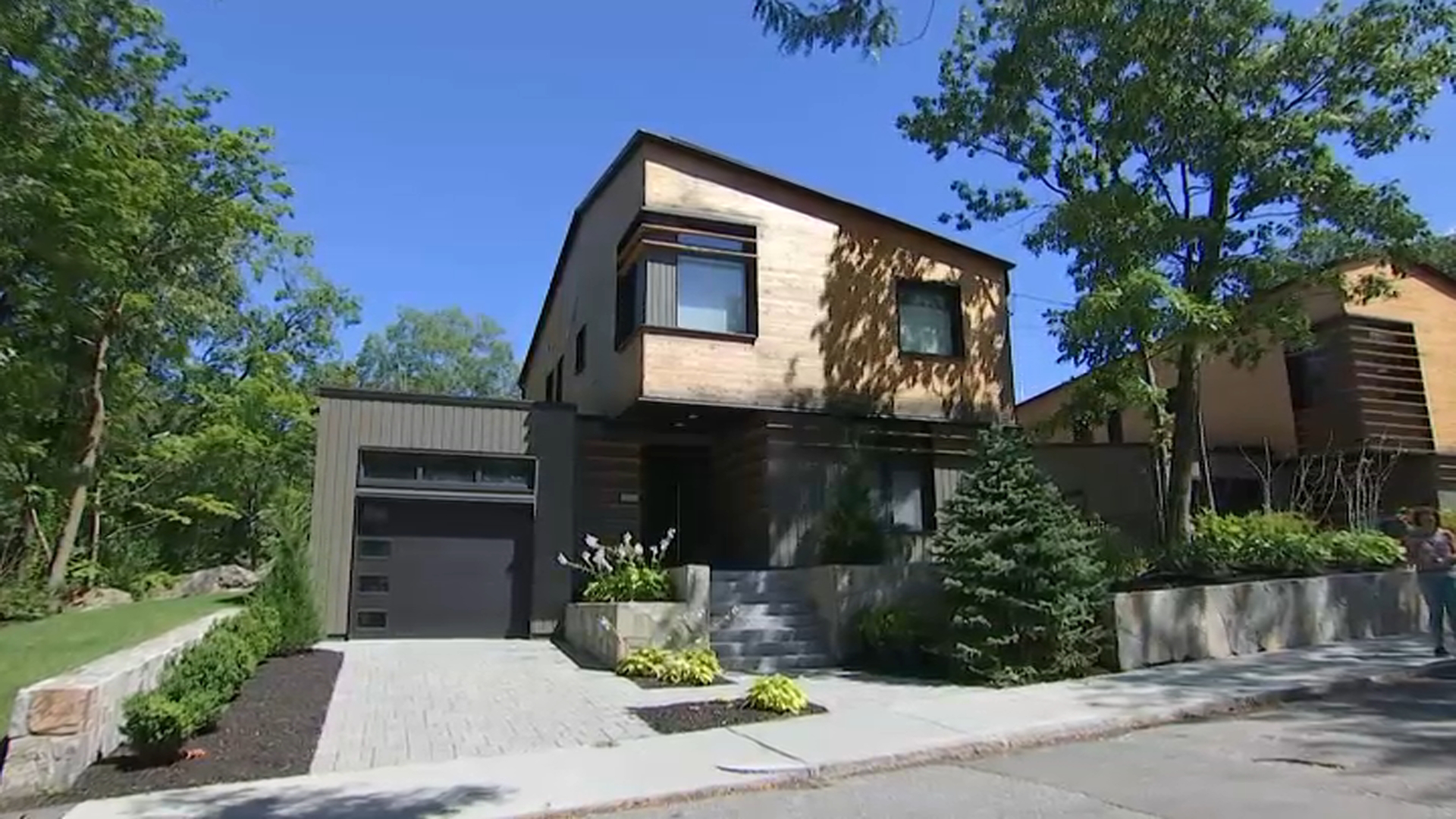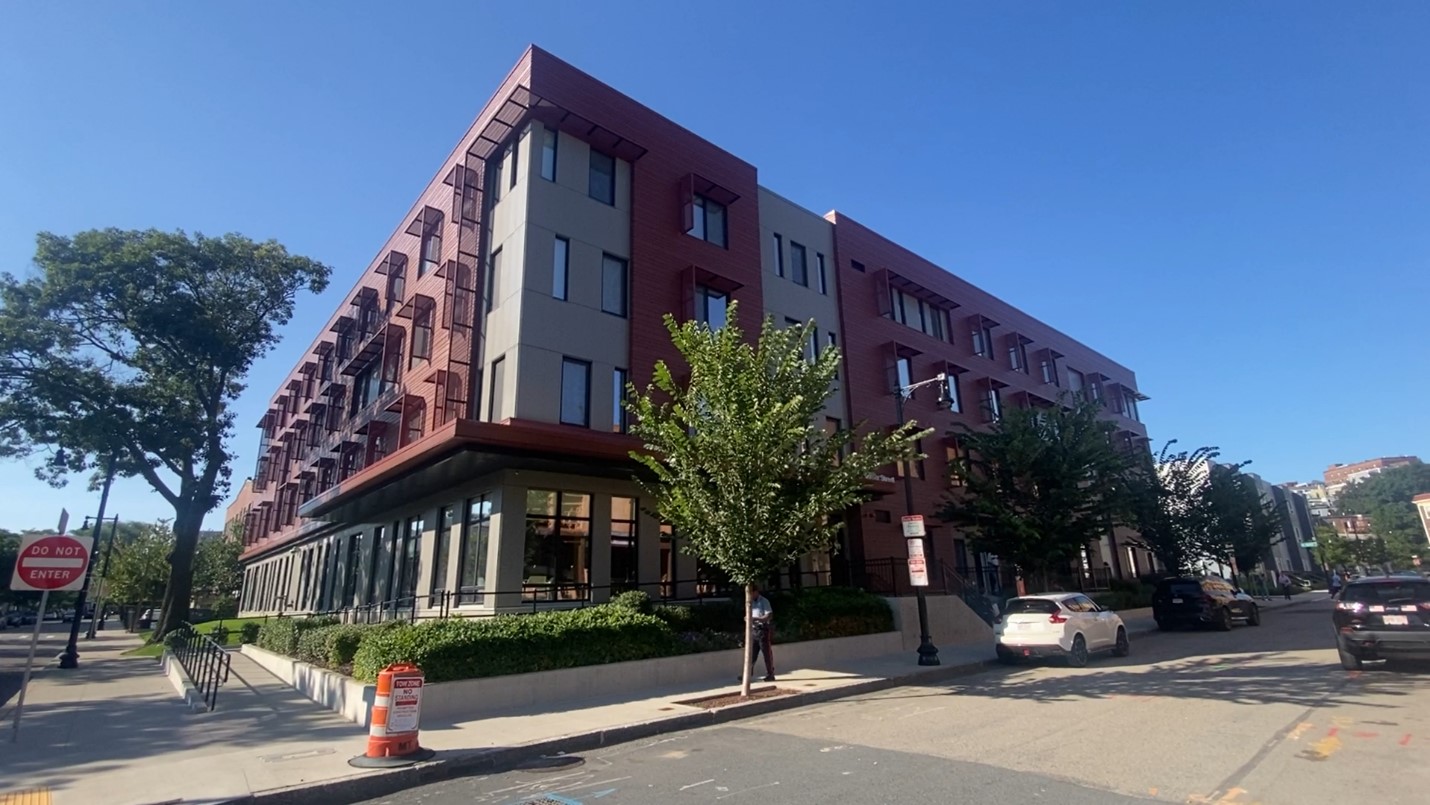Nestled inside the hustle and bustle of a busy Boston University sits one of the most sustainable buildings in all of New England.
"I think this sets the tone in a big way, because this building...is an example of how to do this," Dennis Carlberg, BU's associate vice president of sustainability, said.
At 19 stories high, BU's Center for Computing and Data Sciences on Commonwealth Avenue is a big building with a tiny carbon footprint.
"If we expect to have a more just and sustainable future for our community. We all need to work together on these issues," Carlberg said. "It's an example, not the example.
Get Boston local news, weather forecasts, lifestyle and entertainment stories to your inbox. Sign up for NBC Boston’s newsletters.
He said in principle and practice, the facility is stacked on the building blocks of what it means to have sustainable infrastructure.
The eight terraces lining the zigzag structure are connected to water runoff tanks capable of capturing and storing 20,000 gallons of fresh rainwater. Nearby solar arrays generate 1.2 million kilowatt hours of electricity a year - enough to supply a quarter of the building's electricity.
And instead of gas, 31 geothermal wells power 90% of the building's heating and cooling. It runs twice as deep into the ground at the neighboring John Hancock tower is high.
"This is the heat pump," Carlberg explained. "This is where the magic happens. Essentially what we're doing is we're pulling that thermal energy out of the ground."
It comes from 1,500 feet below.
"In the summertime, we're heating up the ground and in the wintertime, recalling that ground back down and pulling that thermal energy back out."
"I mean it when I say it was really about reflecting what the data science discipline is, and bringing the world inside is a big part of it," Boston University professor Azer Bestavros said.
Bestavros believes this facility is the gold standard of green buildings. He says it's more than a catalyst to a carbon-free future, but also describes it as a teaching tool for the very students who frequent it.
They think of the building as a living lab.
"We can have video cameras, look at what goes into the waste bin, label it, but then be able to predict what's in it in the future because [we] use machine learning for that," he said.
More on climate and sustainable design
"Linking the use of the building to something like sustainability or zero waste in this particular case is a good example," he added. "And students love it because it's, of course, what they do. It's the life. So it's not taking them out on some hypothetical case study. It's their building."
This carbon-free and fossil fuel free building is the new symbol of Boston University, but it also serves as a beacon of what's possible for sustainable infrastructure in Boston and beyond.
"There's no question it inspires owners to think outside the box about what is next," Nick Dhimitri, executive vice president of external affairs at Suffolk Construction, said.
Suffolk is responsible for building the facility. Dhimitri credits timing, the pandemic and unprecedented government investment for igniting a green building revolution across the country.
"We've got projects in San Diego and San Francisco that are taking lessons learned from here and applying them there. And the next building we build here will learn from the projects in Dallas, Texas and Tampa and these other places that we've built," he said.
It's estimated that a traditional building of this size would emit 1.4 million kilograms of carbon dioxide annually. That's equal to 300 gas-powered cars on the road.
Carlberg said for as monumental of a moment as this is, the larger task ahead is getting the rest of the city there.
"In 2050, when the city wants to meet its near net zero goal of carbon-free, 85% of the buildings that are here today will exist then. And so it's the existing buildings that we really need to be turning our attention to," he said.
Boston University officials say they hope to be entirely carbon neutral by 2040.
The building is on the short list for the World Building of the Year. The World Architecture Festival Awards will be announced in December. Learn more here.
Get updates on what's happening in Boston to your inbox. Sign up for our News Headlines newsletter.




